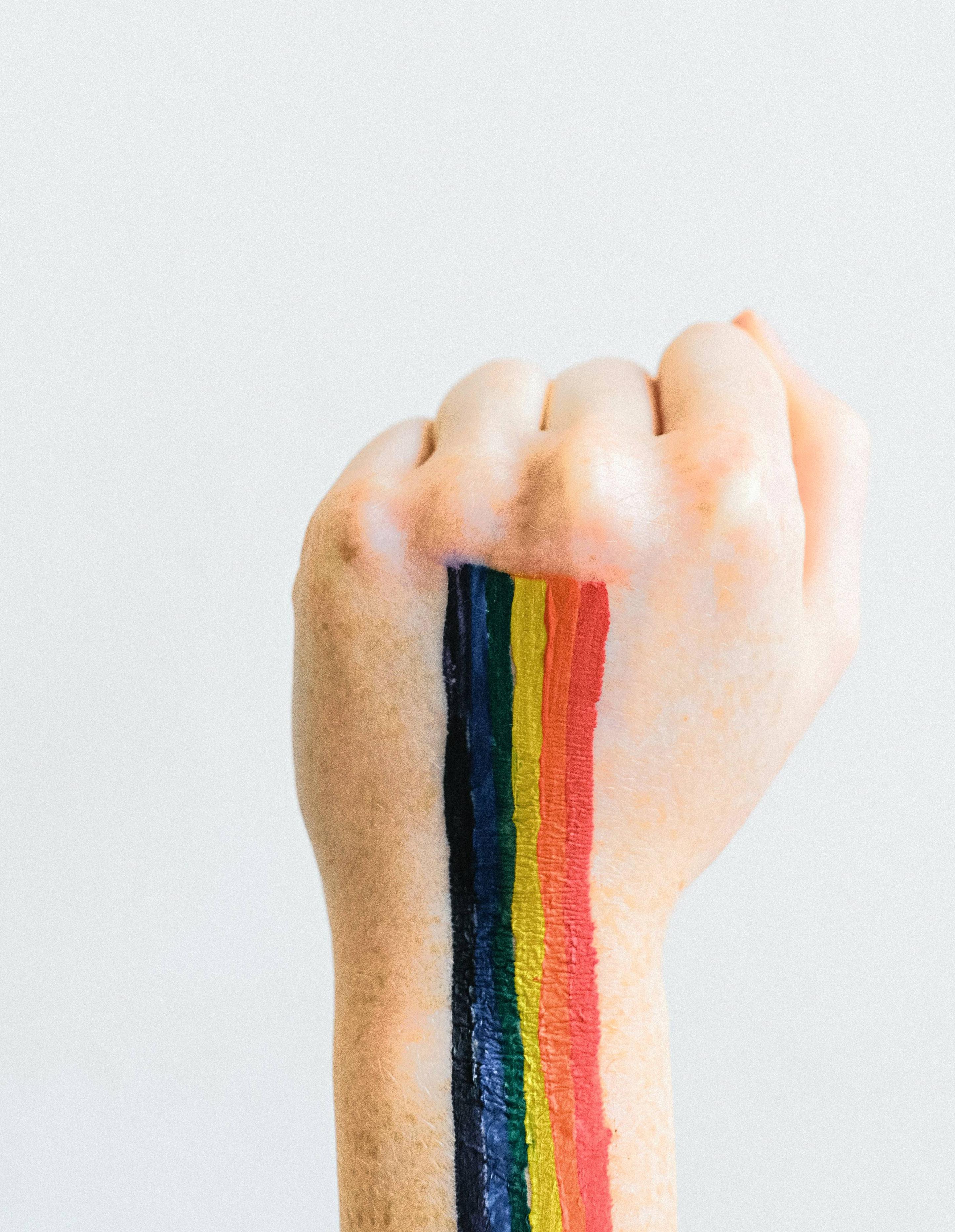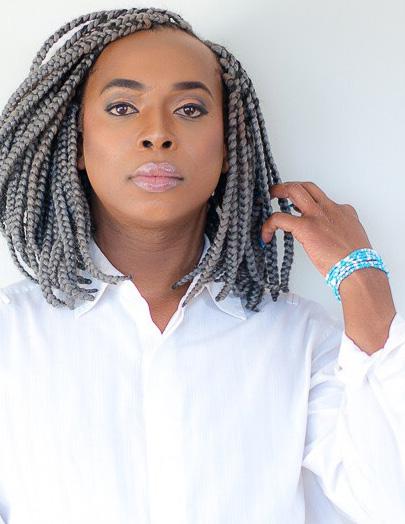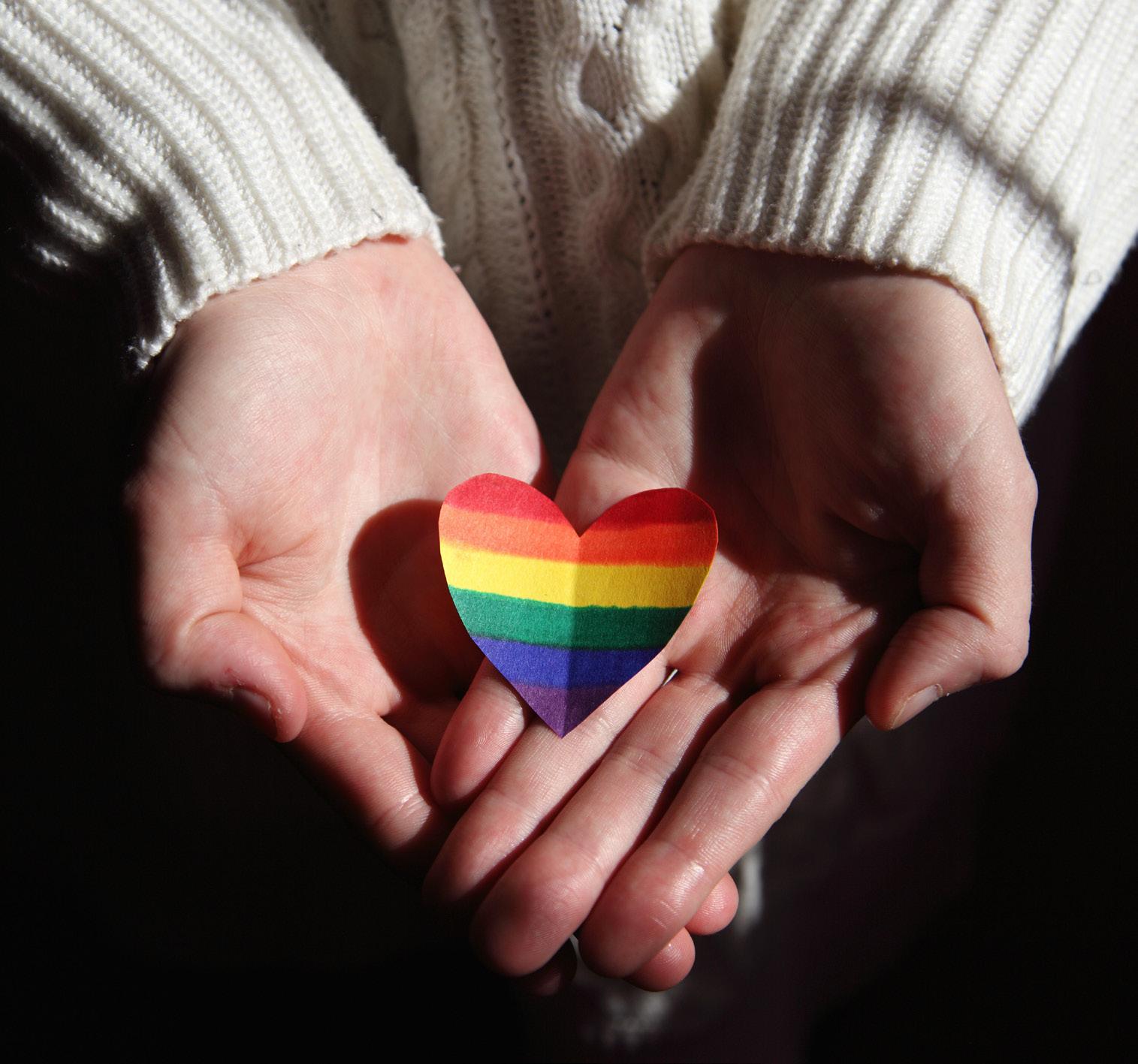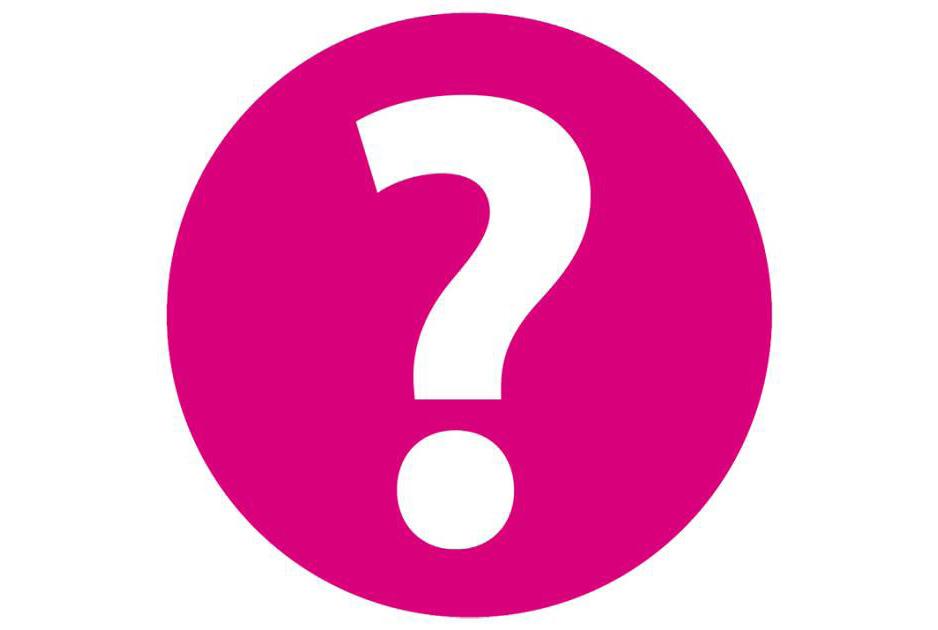
17 minute read
Queer TikTokers
@stelluhb Followers: 608K Stella captures the ups and downs of high school life in this account out of Hawaii. She puts trans girl teen life on display with videos about issues like not using tampons like her friends.
LIAM KARABO JOYCE
Advertisement
YOU have heard of queer YouTubers and queer Instagrammers, there are even queer tweeps (Twitter users) but now there’s a whole new set of online content creators that you need to know about (and follow, obviously): queer TikTokers.
TikTok has become a major player for fantastic LGBTQI content on the internet and the creators deserve some props.


@naerunnels Followers: 166.1K This 18-year-old medical student makes TikToks about being a girl and being mistaken for a boy and as black person being mistaken for a white person.
@matte_jacobs Followers: 2K Gender non-conforming Matte is to South Africa what Skye Leighton on Netflix’s The Politician is to Santa Barbara residents. Matte has striking features and is meant for Vogue pages. Matte has and some pretty good dance moves too.

@yazdemand Followers: 227.3K Yaz is a 17-year-old trans girl who uses app-wide trends to be herself. She makes TikToks about her trans identity, unsupportive family, and aspiring modelling career – always with a dash of humour.



@daylan_fabiano Followers: 46.7K Capetonian Daylan has a knack for uploading some of the best transformation videos on TikTok. The make-up enthusiast can go from boy to girl within seconds and looks good while doing it.
Sexuality and gender
IT’S VERY likely that at some point of your life, you’ve seen your Facebook or Twitter timeline and news sources referring to the LGBT, LGBTIAQ or LGBTIAQQAP+ community.
South African academic Dr Nyx McLean, who’s pronouns are they/them, wrote a piece for the Cape Argus where they gave a deeper explanation on this.
In the article “What does LGBTIAQ+ stand for?” McLean explained that the LGBTIAQ+ letters represent not only sexual orientation or identity but gender identity.
“Sexual orientation or identity is about who you’re attracted to and how you act on this desire. Gender identity is about how you identify or do not identify with regards to your gender. Gender identity has expanded beyond the binary of man and woman and includes non-binary, gender non-conforming, genderqueer, agender, just to name a few,” they said.
Sexuality, much like gender, exists on a spectrum. The Kinsey Scale was arguably the first commonly known metric to acknowledge the complexities of sexual identity.
According to the Kinsey Institute website, doctors Alfred Kinsey, Wardell Pomeroy and Clyde Martin developed the Heterosexual-Homosexual Rating Scale – known as “The Kinsey Scale”.
“First published in Sexual Behavior in the Human Male (1948), the scale accounted for research findings that showed people did not fit into exclusive heterosexual or homosexual categories.”
However, The Kinsey Scale does not address all possible sexual identities, and society itself has moved to the point where it acknowledges that sexuality is very individualistic and it is up to the individuals themselves to determine what sexuality they identify as. There are predominant sexualities people use, but just because they are predominant, doesn’t mean they are the only ones.
Pexels DEAN SHIM Picture:
are not the same thing

JAMAL GROOTBOOM AND THEOLIN TEMBO

LESBIAN: Self-identified womxn* (Womxn is the alternative word for women to include transgender women) loving womxn. They have romantic, sexual or emotional relationships with womxn of the same gender.


GAY: Self-identified men loving men. They have romantic, sexual or emotional relationships with men of the same gender.


BISEXUAL: Someone who loves people of any gender. With the inclusion or social recognition that there is more than one gender; this sexual orientation is also called pansexual.
Asexual: Someone is asexual if they do not experience any sexual desire, attraction or feelings for another person. This does not mean that they cannot have romantic or platonic relationships but that these relationships are not founded on sexual desire but rather on feelings and human connection. Asexual people are often faced with an onslaught of advice from wellmeaning people about how they haven’t met the right person or that they may be a different sexual orientation to how they’re being read. But what this does is disrespect an asexual person’s identity. Trust a person to know what or who they do or do not desire.

Queer: Queer is often used as a catch-all for the LGBTIAQ community.
Queer is an identity in and of itself.
It can mean not fitting into any particular label or sexual identity that exists (so not being straight, gay or bisexual); it is an identity outside the norms that does not fit into the options that are available.

“Other letters you may encounter, such as with the longer version of LGBTIAQQAP+ include these identities: questioning, allies, pansexual and + for everyone else who does not identify as heterosexual, cisgender or with any of the options available.
“It is important that we recognise that some of these words are adopted from the West or the Global North (United States of America and Europe primarily). Local experiences of gender, gender identity, sexual orientation may be different,” Dr McLean explains.
When it comes to gender, if you’re a Baby Boomer, Generation X or a Millennial, for the vast majority of your life the gender spectrum has existed in two binaries. Either you’re a man or a woman. Identifying with the gender you were assigned at birth. And we existed with these binary concepts of gender even though people who deviate from the gender norms have been around in society since the dawn of time.
Specifically in reference to transgender people who have been present throughout history.
According to Professor Stephen Whittle, founder of Press for Change, in The Guardian with regards trans terminology, the word “transvestite” was birthed in 1910 from German sexologist Magnus Hirschfeld. Followed by “transexual” in 1949 and “transgender” being coined in 1971.
One of the big catalysts for the public discourse regarding gender identity in recent years was with Caitlyn Jenner’s public transition. And since then with regards to gender society has expanded on the idea of gender identity moving away from viewing it as only fixed points but rather on a spectrum, with new terms and identifier being coined and used.
This includes gender identity, gender expression, being gender fluid, gender non-conforming and being non-binary.
Gender identity is a person’s individual internal experience of gender. Meaning their sense of being on the gender spectrum which can be the same as the one they’re assigned at birth, different or neither.
Gender expression is how people show or publicly display their gender.
Gender fluidity is when you move between the binary gender spectrum and may want to express them interchangeably between traditionally masculine and feminine.
RuPaul’s Drag Race star Courtney Act is a good example of someone who is gender fluid and exists within both their masculine identity as Shane Jenek and their feminine identity as Courtney Act.
Gender non-conforming people are those who express themselves outside the gender roles associated with their gender identity but may or may not identify as transgender.
Non-binary people are those who exist outside the gender binary and are neither a man or a woman and use whichever pronoun they feel comfortable with (he/ she/them). Non-binary also is underneath the trans umbrella but it may or may not identify as transgender.
Meaning the difference between sexuality and gender is that sexuality is who you are attracted to while gender is who you are. And they aren’t interchangeable and don’t go together like a package deal.


MANY of you know Olwethu “King Olwee” Mlotshwa as the DJ who hits the decks with fire dances moves during many of the recent virtual parties during the lockdown period.
However, the SA Film and Television Awards winning director wears many hats in the entertainment industry including the director of some of Mzansi’s most popular reality shows including Being Bonang, Somizi and Mohale: The Union and now Life With Kelly Khumalo.
Beyond being an amazing DJ on the decks and being behind the camera for some of Mzansi’s most popular reality shows, he’s also a beacon of light for many LGBTQI+ people in South Africa. Being an openly gay man who presents himself out of the masculine binary. Slaying the game with inches of braids, Cardi B-style nails and having his face beat for the gods.
However, like many queer people in the workforce, being authentically yourself comes with obstacles.
Talking about this, King Olwee is open about the hassles he faces on set.
“In film and television, I haven’t had bad experiences. It’s just stereotyping here and there. You get to the set and people think you’re the make-up artist or the hairdresser. So that stereotyping has been quite annoying.”
He further goes on to explain that many times instead of people being outright homophobic, they would use microaggressive tactics such as a cameraman going to a producer instead of him to raise an issue. However, the people he generally works with and know him respect his authority on set and the problems come in when new people are introduced.
In the entertainment industry, especially behind the scenes, many queer people are involved in various roles.
Many of these queer people who work in front or behind the scenes also are able to express themselves how they see fit. Speaking about why it’s important for him to be himself he says: “It’s important because it then tells other queer people that anything is possible.”
Furthermore, he emphasised that he wears what he feels like, what he wants, “I never thought of it in a political way.”
He continued: “I do it because this is how I look. This is what feels most natural to me.”
Speaking about his DJing career, King Olwee said that his looks have become an extension of his brand and when he appears without his braids or nails they’ll ask “where are your nails? Or where is your hair?” And it’s made it easier for him to stand out. “Because there are a lot of excellent people in the entertainment industry who are not as visible because it’s not as fascinating.
“There are people who do absolutely great work but they’re not necessarily a feminine gay man which such an outrageous look happening.
“Looking different has allowed me to stand out!”
And while every industry has its up and downs he’s been fortunate enough to have not had any major drawback, and opportunities have found their way to him. But there have still been times where people mistaking his role, especially in the DJing space.
“I still go to gigs and people think I’m the manager because again, they think that gays can only make the star and not be the star. And they ask me, ‘Which artist are you with today?’ No, I’m here to play.”
Recently Olwee played a fire set during the virtual PJ Party with DJ Zinhle where he played some club classics that still get you jiving on the dance floor. And during
Picture: SHARON MCCUTCHEON pexels
his set people were having a good time enjoying the throwback jams and he was giving them a show. Weaving in some of the popular amapiano dance moves he mentions that someone in the comments “for a lack of anything bad to say, ‘this DJ is busy doing (ama)piano moves to house music’”.
“There are always people who are trying to make you look bad... and they find ways to be homophobic without being directly homophobic.”
Talking about queer representation in the media and the entertainment industry as a whole locally he said, “I think in terms of representation we’re doing well, but I feel like the representation comes with conditions.”
“And I feel like the entertainment industry doesn’t believe in LGBTQIA+ people enough... They want you to first be a success before they give you a chance. You see that in terms of Somizi getting the shows. Somizi

wouldn’t be getting those shows if he had 100k followers.”
Furthermore, explaining how Moshe Ndiki and Lasizwe had to build a large fan base first and be co-signed by a recognised entity before they were given more opportunities.
“Anyone who is LGBTQIA+ needs to work a lot harder to be recognised even though they are talented.”
He continued: “Whereas if you look at the general new talent. They’re never anything if you look at anyone playing a cis(gender)heterosexual role. They don’t need to be anything. People believe in their story.”
Speaking about the future with regards to the normalisation of people expressing their gender in whichever way they like, the SA Film and Television Awards winning director said it creates a world that is limitless and the best place to be is gender-queer and non-binary. And the future is going to be far more open and will see people as people.
PrEP
education
LIAM KARABO JOYCE


WE LIVE in a world where access to information is at the touch of a few buttons. Where word of mouth is still an effective form of communication and where social media educates on days trolls aren’t spewing hate.
So why then do so many people not know what PrEP is?
Across the world, stereotypes and stigmas are something members of the LGBTQIA community face almost every day. Couple that with the stigma around HIV and Aids, despite the medical advances made, and you have just one of the answers.
With that said, as per the editor’s note, at Queer+ we aim to educate readers.
With the help of the Centers for Disease Control and Prevention, here is the 411 on PrEP – who should take it, why, how and where you can access it.

Pre-exposure prophylaxis (PrEP) is an HIV prevention strategy where HIV-negative individuals take antiHIV medications before coming into contact with HIV to reduce their risk of becoming infected. The medications work to prevent HIV from establishing infection inside the body.
PrEP has been shown to reduce the risk of HIV infection through sex for gay and bisexual men, transgender women and heterosexual men and women, as well as among people who inject drugs.
The Bangkok Tenofovir Study demonstrated that PrEP works for people who inject drugs. It does not protect against other sexually transmitted infections (STI) or pregnancy. It is not a cure for HIV.
IS IT A VACCINE?

NO. PrEP does not work the same way as a vaccine. A vaccine teaches your body to fight off infection for several years. For PrEP, you take a pill every day by mouth. If you take PrEP daily, the presence of the medicine in your bloodstream can often stop HIV from taking hold and spreading in your body.
If you do not take PrEP every day, there may not be enough medicine in your bloodstream to block the virus. PrEP can cause side effects like nausea in some people, but these generally subside over time. No serious side effects have been observed, and these side effects aren’t lifethreatening.
If you are taking PrEP, tell your healthcare provider about any side effects that are severe or do not go away.



TRANSGENDER
I’m transgender, will PrEP interfere with my hormone therapy?
According to the Centers for Disease Control and Prevention, more studies are needed on this topic.
However, there are no known drug conflicts or interactions between the medicines used in PrEP and hormone therapy. There is no known scientific reason why the drugs cannot be taken at the same time.
If you are worried that PrEP will affect your hormone therapy, ask your health-care provider to check your hormone levels.
People who use PrEP should see their health-care provider every 3 months for follow up, HIV tests, and to have their prescriptions refilled. This visit could be combined with your hormone therapy appointments.
CONDOMS
If I take PrEP, can I stop using condoms when I have sex?
No, you should not stop using condoms because you are taking PrEP. It doesn’t give you any protection against other STDs, such as gonorrhoea and chlamydia.
If used the right way, every time you have sex, condoms are highly effective in preventing HIV and some STDs you can get through body fluids, like gonorrhoea and chlamydia.
However, they provide less protection against STDs spread through skin-to-skin contact, like human papillomavirus or HPV (genital warts), genital herpes, and syphilis.
How long do I have to take PrEP before it is effective?
When taken every day, PrEP is safe and highly effective in preventing HIV. PrEP reaches maximum protection from HIV for receptive anal sex at about 7 days of daily use. For receptive vaginal sex and injection drug use, PrEP reaches maximum protection at about 21 days of daily use.
No data are yet available about how long it takes to reach maximum protection for insertive anal or insertive vaginal sex.

DATA
How effective is PrEP?
Truvada for PrEP provides 92% to 99% reduction in HIV risk for HIVnegative individuals who take the pills every day as directed.
If a daily dose is missed, the level of HIV protection may decrease. It only works if you take it. People who use PrEP correctly and consistently have higher levels of protection against HIV.
According to data analysis from the iPrEx study that found PrEP to be effective:
How long do I need to take PrEP?
You must take PrEP daily for it to work. However, there are several reasons people stop taking PrEP.
For example, if your risk of getting HIV infection becomes low because of changes in your life, you may want to stop taking PrEP.
If you find you don’t want to take a pill every day or often forget to take your pills, other ways of protecting yourself from HIV infection may work better for you.
If you have side effects from the medicine that are interfering with your life, or if blood tests show that your body is reacting to PrEP in unsafe ways, your provider may stop prescribing PrEP for you. You should always discuss this question with your healthcare provider.
WHO’S IT FOR?
Can you start PrEP after you have been exposed to HIV?
PrEP is only for people who are at risk of getting HIV. But PEP (postexposure prophylaxis) is an option for someone who thinks they’ve recently been exposed to HIV during sex or through injection drug use.
PEP means taking antiretroviral medicines after a potential exposure to HIV to prevent getting the virus. PEP must be started within 72 hours of possible exposure to HIV. If you’re prescribed PEP, you’ll need to take it once or twice daily for 28 days.
Access to PrEP Use the following link to find a PrEP provider in your city or province - https://www. myprep.co.za/locations







